A new space has opened for one of Japan and South Korea’s most celebrated artists, Lee Ufan, at the Busan Museum of Art. Joanna Kawecki reports.
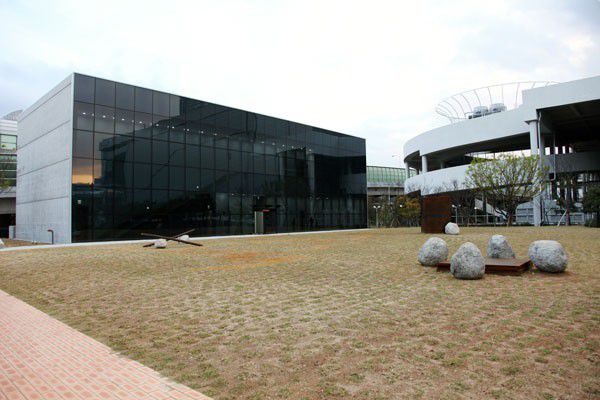
June 29th, 2015
Top Image – Photography: HYOWON PARK (Busan Museum of Art)
Dedicated to showcase the works of renowned artist, Lee Ufan, the ‘Space Lee Ufan’ building covers 660 sqm, consisting of two floors including a cafe and gallery store. Located by the main building of Busan Museum of Art, the new space sits facing the museum’s sculpture garden where many of the artist’s works can also be found.
Conceptualised over two years and built within 12 months, the building stands in a location where the artist himself visited over three times to determine particular positioning, direction and lighting. He was “committed to make the space an artwork itself,” says Cho Il Sang, Director of Busan Museum of Art.
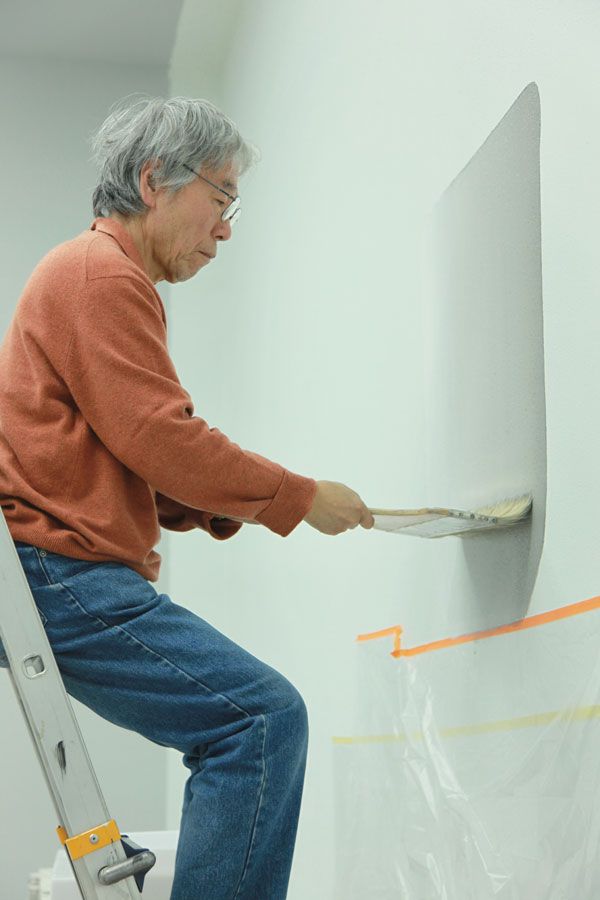
Artist Lee Ufan. Photography: HYOWON PARK (Busan Museum of Art)
Space Lee Ufan is as minimalist yet detail-driven and complex as the artworks it contains. The architecture was designed by Lee Ufan himself, who also took on the basic planning of the gallery, ensuring that the architectural elements focussed on sustainability for longevity.
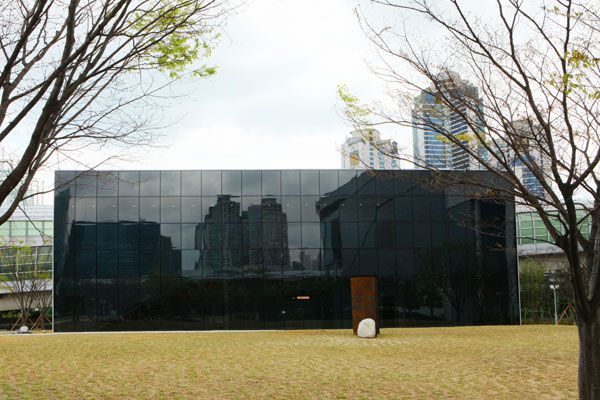
Space Lee Ufan. Photography: HYOWON PARK (Busan Museum of Art)
The solid, rectangular concrete and glass building with a pivotal transparent front façade comprises of 144 glass panels (6 x 24) and reflects a mirror-like quality during the day, and at night the centrally lit space showcases a transparent interior. A grey palette presides the overall theme with alternating shaded grey walls, concrete and wooden flooring, including the gallery staff adorning grey uniforms and sneakers. Generous with natural light, the main room located on the second floor showcases a partially open ceiling, allowing for natural light, harmonising with the concrete-dominant space.
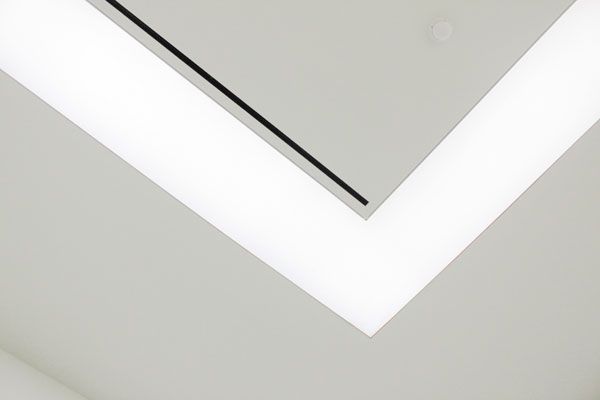
Ceiling Detail at Space Lee Ufan. Photography: MoniqueKawecki
A long wooden staircase connects both floors and is uniquely positioned alongside the front glass facade, providing a stellar view of artworks both inside and outside whilst in transition between both main areas of the building. Atop the second floor, the recording of a faint sound of a Korean Bongdeoksa “Emille” Bell can be heard. An expressive and moving sound, dim yet subtly discovered by passing visitors.
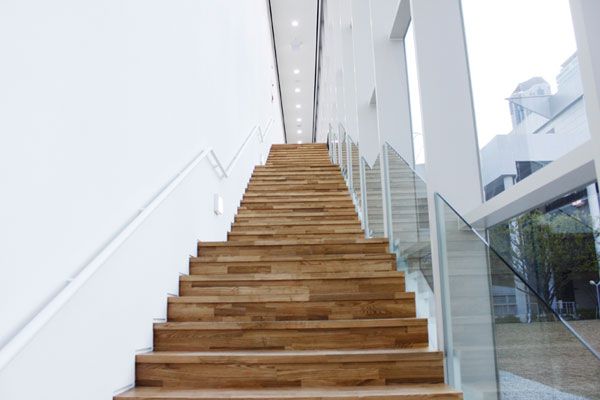
Space Lee Ufan. Photography: MoniqueKawecki
Born in Korea, Ufan spent the majority of his early years in Japan, where he was pivotal in introducing new practices and movements, such as the Korean monochrome painting movement tansaekhwa, and where he established the late 1960s avant-garde Japanese art movement, Mono-ha. Mono-ha is translated to ‘School Of Things’, expressing the meaning of a substance which isunmade. Emphasising materials, perception and relationships between space and matter, with the dialogue between his sculptures of stone and steel are examples of this.
The interior details of Space Lee Ufan take on many qualities similar to the ‘Lee Ufan Museum’ on Naoshima Island, a building that the artist designed in collaboration with, and after, a long insight conversation with Japanese architect, Tadao Ando. Positioned in isolation in a valley surrounded by mountains and sea, the first museum offers a connection between nature, architecture and art, and perfect for reflection and mediation as his work encourages. The exterior architecture and shape of Space Lee Ufan in Busan is different to that in Naoshima Island, as the striking and large rectangular building rather dominates in statute rather than harmonising with the surrounding nature.
Ufan explains, “In Naoshima, the amazing architecture of Tadao Ando’s building plays the dominant role, and my works resonate with it as a part of that space. In Busan, the purpose, or priority, of the space is to exhibit my work, which vitalises the space.”
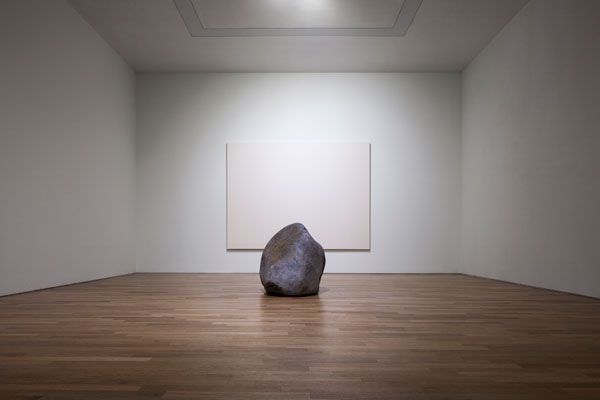
Space Lee Ufan. Photography: MYUNG-RAE PARK (Provided by the Busan Museum of Art)
However, similarities are found in the details of wall structures (partitioned areas between each gallery room, encouraging personal transition between spaces) and the lighting details – LED panels are embedded in the ceiling as bright shards and an angular complement to the gallery space’s overall geometry.
Ufan’s work is shown in numerous public collections internationally, such as the Tate Modern Gallery in London, to the Nationalgalerie in Berlin, yet Space Lee Ufan presides in the humble location of Busan, a pivotal space and generous homecoming for the artist.
Lee Ufan
studioleeufan.org
A searchable and comprehensive guide for specifying leading products and their suppliers
Keep up to date with the latest and greatest from our industry BFF's!

The Sub-Zero Wolf showrooms in Sydney and Melbourne provide a creative experience unlike any other. Now showcasing all-new product ranges, the showrooms present a unique perspective on the future of kitchens, homes and lifestyles.

Channelling the enchanting ambience of the Caffè Greco in Rome, Budapest’s historic Gerbeaud, and Grossi Florentino in Melbourne, Ross Didier’s new collection evokes the designer’s affinity for café experience, while delivering refined seating for contemporary hospitality interiors.

Suitable for applications ranging from schools and retail outlets to computer rooms and X-ray suites, Palettone comes in two varieties and a choice of more than fifty colours.

Sub-Zero and Wolf’s prestigious Kitchen Design Contest (KDC) has celebrated the very best in kitchen innovation and aesthetics for three decades now. Recognising premier kitchen design professionals from around the globe, the KDC facilitates innovation, style and functionality that pushes boundaries.
Award winning architect James Stockwell has been confirmed for the Rick Joy Blue Mountains Masterclass from 10-16 March 2012. Joining Rick Joy (Arizona), Peter Stutchbury, Richard Leplastrier and Lindsay Johnston will be award winning architect James Stockwell, one of the interesting mid-career practising architects booked to do the residential Master Class at Jemby Rinjah Lodge, […]

How one commercial furniture company is transcending the divide between digital and print to deliver outstanding content on all platforms.
The internet never sleeps! Here's the stuff you might have missed

Nazcaa boasts a statement design for a singular restaurant and it’s right at home on the Dubai hospitality scene.

Suitable for dual and multi-screen configurations, this monitor arm from Colebrook Bosson Sanders breaks new ground in terms of usability and ergonomic design.